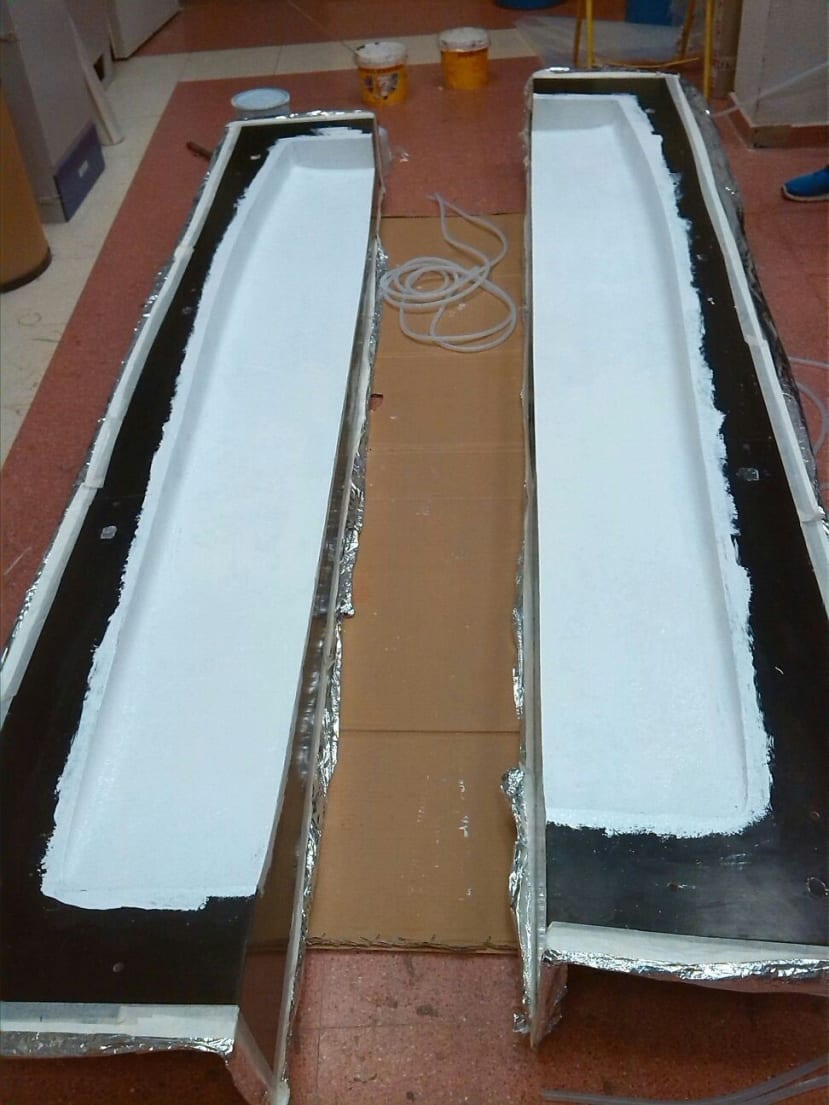Design and Fabrication of a 2.5 m Catamaran in Fibreglass
Follow articleHow do you feel about this article? Help us to provide better content for you.
Thank you! Your feedback has been received.
There was a problem submitting your feedback, please try again later.
What do you think of this article?
Composites are the avant-garde in naval architecture, as every step forward in their development makes clear that they are the materials in which the future is constructed.
Traditionally, steel has been the main material in the production of a ship (and wood before it), appearing in the hull, in its internal structure, tanks… But, what about a steel-like material in terms of mechanical characteristics, but a lot lighter? That is the principal advantage of composites over steel, but if you scratch under the surface you have a lot more which we will see through this article.
We are a Spanish Team from the Technical University of Madrid who participated last year in the annual competition 'Hydrocontest', where teams from different universities from all around the world design and fabricate small radio-controlled boats and run against each other.
The first time trying to build a boat, even a small one, you have to ask yourselves a lot of questions but the two biggest ones are: HOW are we going to do it and WHICH materials we will be using?
We had our design clear, a 2.5-metre-long catamaran, a type of ship consisting of two separated hulls which reduce the water resistance and improve stability. Once our catamaran 3D model was finished and all of its hydrodynamic calculations done, it was time to bring it to life. We were sure about using a composite, but not exactly which one. On this fact depended the construction process that we would need to follow, we needed to think about how we were going to assemble it and the economic study was also important.
If we were to build a high-speed, competition catamaran, carbon fibre would have been an ideal material to work with. It has great resistance against strikes, it is very light and its behaviour under traction-compression is magnificent. But it is too expensive.
On the other hand, we have fibreglass, which has similar but lower characteristics and its price is quite reasonable. Our catamaran will spend no more than a week on the water doing very short races, so using this material we assure good characteristics and behaviour at a good price. But how are we going to transform these blanket-like sheets into a boat?
After a lot of comparisons and pro-and-cons lists, we decided that the best way to build our hulls was to fabricate a model of the boat from which we were to obtain the half-split mould.
Over this cast is where we laminated all the different layers of fibreglass needed in order to obtain a good surface on the outside of the hull, where it will be in contact with the water.
When you are working with composites, you need not only the fibre but also the matrix. Matrices are fluid, highly viscous, artificial resins which impregnate the fibres which help all the forces and tensions to distribute all along the material. The one we used this time was an epoxy resin, which is the one usually used when you are working with glass fibre.
In order for the impregnation (uniform distribution of the resin through the fibre) to be adequate, there are several methods, each one with its own eases and difficulties. The one we chose was vacuum infusion. In this one, as its name describes, we confine the fibres (and a lot more of the auxiliary material needed) inside a vacuum bag. This bag has an inlet and an outlet through which epoxy resin flows in and out. Epoxies, as all resins, have a characteristic known as gel time, which is the time it takes to turn from liquid to gel and stop flowing. Having an accurate knowledge of this fact let us calculate the amount of resin we needed and how much will it take for the process to be ended.
The process took about half an hour. After that we let the new glass fibre hulls lie over their infusion-beds for almost a day, to be sure that the composite would be completely dry. Once we took them out, the union of both sides was made using again composites, but in a handmade way, which make noticeable that the more complex the process is the better the results.







